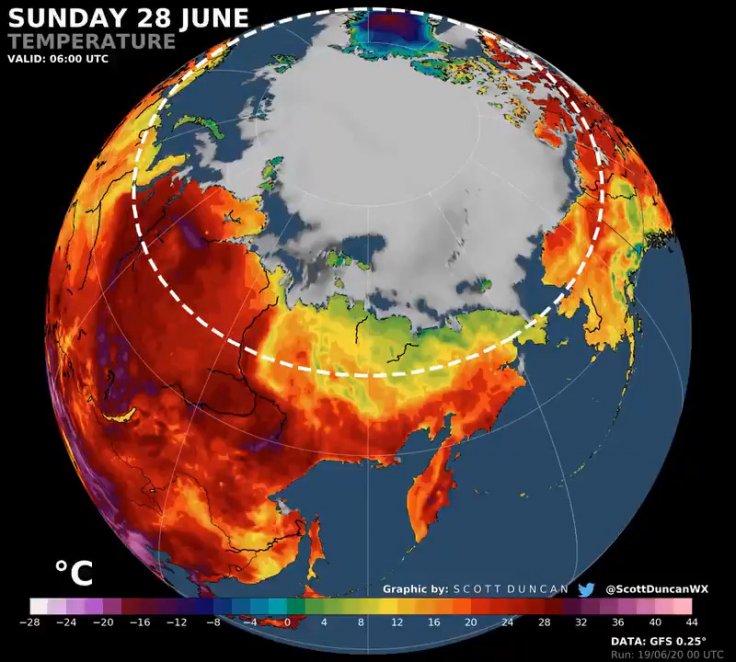A Siberian town has likely set a record for the hottest temperature in the Arctic Circle as it reached 38 degrees due to global warming. Verkhoyansk, 4,828 km to the east of Moscow, just inside the Arctic Circle, usually reaches the highest summer temperature of 20 degrees.
If the record heat is verified, it would be the hottest temperature in the Arctic, the region that is warming not less than twice the global rate. Records in the town have been kept since 1885.

On Sunday, the region recorded a high temperature of 35.2 degrees, which is a notch below the Saturday reading, reports The Sydney Morning Herald.
Coldest Spots in The World
Verkhoyansk, a town of 1,300 inhabitants located far north than Fairbanks, Alaska, is known for its unusually wide temperature range. The location is one of the coldest spots in the world, with its temperature often dipping below minus 50 degrees.
Chersky, located 1,127 km north-east of Verkhoyansk, unusually reached 30 degrees the past week.
The year 2020 has been different for Siberia as it recorded above-extreme temperatures, accelerating the meltdown of snow and ice, also contributing to permafrost melt. This caused a major oil spill, while the Siberian wildfire season had an unusually severe and early beginning.
Norilsk's oil spill leaked not less than 20,000 tonnes of diesel fuel into Ambarnaya River. To date, this ranks as the worst spill in the Russian Arctic's history.
Questions arose on how accurate the Verkhoyansk temperature measurement system really is, and also on the Saturday weather balloon launch. Heat in the lower atmosphere, in about 1,500 meters, was unusually warm at 21 degrees, hinting extreme surface heat.
Novel Method
Global warming has been tackled in many ways scientifically. In Italy, giant tarpaulin sheets were used to cover glaciers in its northern region so that it slows the melting due to global warming. This is a six-week process that is repeated every year after ski seasons as summer begins fully.
This is a conservation project, first launched in 2008 by Italian firm Carosello-Tonale. Since 1993, the Presena glacier lost more than a third of its volume.
More on The Record
The World Meteorological Organisation (WMO), which verifies global records, does not recognize the polar regions as separate, for its extremes archiving. Hence, the new Arctic record might not get its place in official history books, said Randy Cerveny, professor at Arizona State University, leading the WMO's weather and climate extremes team.
According to Copernicus Climate Change Service, an EU initiative, high pressures parked over the region resulted in such records far from average.
These temperature trends seem to continue, with models pointing towards continued extreme warmth in the region for the next 10 days, and would spill over into parts of Canada and Scandinavia.
Copernicus scientists also note that the last six months were probably unprecedented since 1880 after they paired data with NASA's surface records.









